By Tudor Van HamptonEngineering News-Record The roots of Terex Corp. were planted over a century ago, but Ro...
By Tudor Van Hampton
Engineering News-Record
The roots of Terex Corp. were planted over a century ago, but Ron DeFeo, its chairman and chief executive since 1992, is convinced that Terex is still a teenager. Over the last decade, DeFeo has transformed what was once a debt-heavy aggregator of worn-out brands into a nimble, worldclass producer. "I'm a little bit of a contrarian," says DeFeo, hinting that there may be more surprises yet to come.
The next big change for Terex may be less outward than its landmark 2002 acquisitions of Demag and Genie, whose engineering cache and lean production techniques brought Terex much needed industry respect. In its transition from being a squeaky conglomerate into well-lubed manufacturing operation, Terex is looking at how it can improve its manufacturing workflow and global sourcing to attract new customers.
One target is procuring raw materials so it can deliver goods on time. "If you are buying as much steel as BMW, but you are doing it from 1,000 steel suppliers, it might make sense for you to find fewer suppliers," DeFeo says. "But we never put our companies together, so this is part of this transition of maturing."
Meanwhile, contractors who typically don’t buy into Terex, including those turned off by its former discount tagline, "Simple, Available and Cost Effective," are giving it a second look as Terex moves up from a bargain-bin vendor to a leader in engineering, quality and product support. Its new slogan, "Moving Forward," seems to be a better fit.
DeFeo, who loves to challenge the status quo, emphasizes that Terex is still all about value. "I don't mind being the value leader," he says but admits, "I can't be the negative service provider." Good service also helps prices gain strength. "I don't think a price strategy is a long-term strategy," DeFeo explains. "Today, we are a little bit more sophisticated than that."
Booming construction markets also have helped Terex grow and gain attention on the world stage. "A lot of people are getting a feel for what Terex can do," says Craig Welch, sales manager for Bigge Crane & Rigging Co., a San Leandro, Calif.-based dealer. "Because the market is so rip-roaring right now, people are looking at availability." And newer Terex crane buyers are coming up with "a positive feel," Welch says.
Terex's comeback is unusual in a business with such high barriers to market. "It came together in a way that was not organic to the same degree of Caterpillar, Case, Deere and Liebherr, and therefore was open to criticism," says Stuart Anderson, president of equipment analyst Chortsey Barr Associates, Hagerstown, Md. But its smooth integration of Demag cranes and Genie work platforms went a long way to boost its image and prove that it was capable of serving a spectrum of markets, from developing countries looking for simple machines to North America and Europe, where cleaner engines and more efficient controls come at a higher price and level of service. And Terex continues to be "a work in progress," says Bob Wilkerson, Genie’s former president.
Like its competitors, Terex had a busy first quarter. It had net income of $113.8 million on $2 billion of sales and boosted its backlog 56% to $3.4 billion. Its crane division booked $53 million on $500.8 million of sales. "The market is just out of sight right now," says Welch, "Any place with oil is going nuts."
Terex has solidified its position as the number-three producer behind Caterpillar and Komatsu. Such a growth pattern in the equipment business, from an acquisitions machine to an operations king, "has never been done by anyone before," Anderson says.
Still, there are other growing pains. Dealings with United Rentals Inc. have put Terex on the Securities and Exchange Commission's watch list, and last year's financial restatements for 2000-2003 spooked some investors. But like DeFeo's strong-spoken management style, Terex has a way of breaking the mold. It's stock took a two-for-one split last summer and is riding over $80 per share.
Terex now is aiming for $12 billion in revenue by 2010. Global demand has suppliers in a bind, and Terex, which scooped up $7.6 billion in sales last year, is not immune. But it sees its global range as an advantage. "There's somewhere close to four-billion people that want to live the way you and I want to live," DeFeo says. "I think it is positive for companies that make infrastructure products."
Despite bottlenecks, Terex managed to introduce a 50-ton-capacity, Chinese-made truck crane thanks to a 50% acquisition last year of Sichuan Changjiang Engineering Crane Co. The machine, which was headed for South America, rolled out along with dozens of other new mining and construction models at the Bauma megashow last month in Munich.
DeFeo, whose contract expires in 2012, is also looking into his own future, though he says he’s not sure what his next steps will be. At Terex, he may be grooming a new leader for the top, having installed Thomas J. Riordan as president and COO earlier this year. As for Terex's newfound image, DeFeo says he isn't letting it go to his head: "I worry about respect from my wife; I'm not too worried about our competitors’ respect."





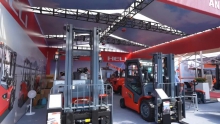
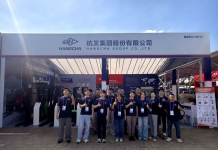


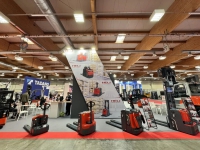
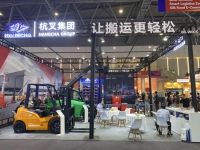

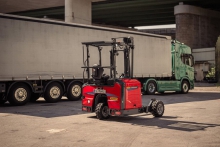

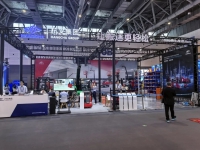


 粤公网安备 44010602003952号
粤公网安备 44010602003952号